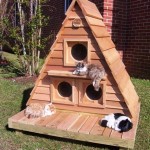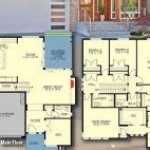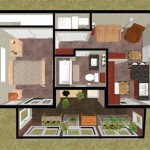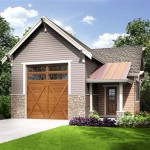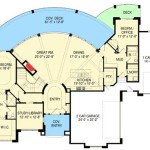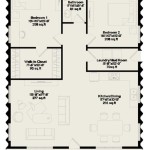Contemporary cabin house plans embody the essence of modern architectural design intertwined with the rustic charm of traditional log cabins. These blueprints serve as a roadmap for constructing cozy and stylish retreats nestled amidst nature’s embrace. One such example is the “Sierra Vista Cabin,” a contemporary cabin perched atop a scenic mountainside, seamlessly blending natural wood accents with expansive windows that frame breathtaking panoramic views.
While maintaining the core function of providing shelter and respite, contemporary cabin house plans offer a refreshing departure from conventional designs. They prioritize energy efficiency, natural light, and an organic flow between indoor and outdoor spaces. These plans cater to individuals seeking a harmonious balance between modern aesthetics and the tranquility of secluded getaways.
As we delve into the nuances of contemporary cabin house plans, we will explore their unique architectural elements, sustainable features, and the process involved in transforming these blueprints into a tangible abode. From selecting the ideal location to incorporating smart home technologies, our comprehensive guide will equip you with the knowledge and inspiration to embark on your own cabin-building journey.
Contemporary cabin house plans offer a unique blend of modern design and rustic charm, prioritizing energy efficiency, natural light, and seamless indoor-outdoor living. Here are 10 key points to consider when exploring these plans:
- Open Floor Plans
- Large Windows and Natural Light
- Sustainable Materials
- Energy Star Appliances
- Loft Spaces
- Outdoor Living Areas
- Smart Home Technology
- Energy-Efficient Windows and Doors
- Customizable Designs
- Rustic-Modern Aesthetic
These elements combine to create cozy and stylish retreats that embrace the beauty of nature while providing modern amenities and conveniences.
Open Floor Plans
Open floor plans are a defining characteristic of contemporary cabin house plans. They eliminate traditional walls and partitions, creating a spacious and airy living area that seamlessly connects the kitchen, dining room, and living room. This design approach fosters a sense of openness and togetherness, allowing for easy flow and interaction between family and friends.
Open floor plans maximize natural light and ventilation, reducing the need for artificial lighting and creating a brighter, more inviting atmosphere. They also facilitate flexible furniture arrangements, allowing homeowners to customize their space to suit their needs and preferences. Whether it’s cozying up by the fireplace or hosting a dinner party, the open floor plan provides ample space for both relaxation and entertainment.
To further enhance the sense of spaciousness, contemporary cabin house plans often incorporate high ceilings and expansive windows. These elements draw the outdoors in, creating a harmonious connection between the interior and exterior spaces. The use of natural materials, such as wood and stone, adds warmth and texture to the open floor plan, creating a comfortable and inviting ambiance.
Overall, open floor plans are a key element of contemporary cabin house plans, offering a modern and functional living space that embraces the beauty of nature and fosters a sense of togetherness.
Large Windows and Natural Light
Contemporary cabin house plans prioritize natural light, incorporating large windows and expansive glass doors to connect the indoors with the surrounding nature. This design approach offers several benefits that enhance the overall living experience.
- Enhanced Natural Lighting:
Large windows allow for ample natural light to flood the interior spaces, reducing the reliance on artificial lighting. This creates a brighter, more inviting, and healthier living environment. Natural light has been shown to improve mood, boost productivity, and reduce eye strain.
- Reduced Energy Consumption:
By maximizing natural light, contemporary cabin house plans can reduce energy consumption for lighting. This is especially beneficial in areas with ample sunlight, where natural light can be utilized for a significant portion of the day. Energy-efficient windows further enhance the energy savings by minimizing heat loss and gain.
- Improved Indoor-Outdoor Connection:
Large windows and glass doors create a seamless transition between the interior and exterior spaces, blurring the boundaries between inside and out. This connection to nature fosters a sense of tranquility and well-being, inviting the outdoors in and extending the living space beyond the walls of the cabin.
- Enhanced Views and Aesthetics:
Windows strategically placed to capture stunning views of the surrounding landscape become living pieces of art, transforming the cabin into a picturesque retreat. The interplay of light and shadow through the windows adds depth and character to the interior spaces, creating a visually captivating environment.
Incorporating large windows and natural light into contemporary cabin house plans not only enhances the aesthetic appeal but also promotes a healthier and more sustainable living experience.
Sustainable Materials
Contemporary cabin house plans prioritize sustainability, incorporating eco-friendly materials and construction practices to minimize environmental impact. Sustainable materials offer numerous benefits, from reducing carbon footprint to promoting healthier indoor air quality.
- Recycled and Reclaimed Materials:
Utilizing recycled and reclaimed materials, such as reclaimed wood and recycled steel, reduces the demand for new resources and diverts waste from landfills. These materials add character and a unique aesthetic to the cabin, while also contributing to a more sustainable building process.
- Energy-Efficient Materials:
Energy-efficient materials, such as insulated windows, doors, and roofing, help regulate indoor temperatures, reducing energy consumption for heating and cooling. This not only saves on energy costs but also minimizes the cabin’s carbon footprint.
- Low-VOC Materials:
Low-VOC (volatile organic compound) materials, such as paints, adhesives, and sealants, emit fewer harmful chemicals into the indoor air. This promotes a healthier living environment and reduces the risk of respiratory issues and allergies.
- Renewable and Sustainable Resources:
Incorporating renewable and sustainable resources, such as solar panels, geothermal heating, and rainwater harvesting systems, reduces reliance on fossil fuels and promotes energy independence. These systems harness natural resources to generate electricity, heat, and water, minimizing the cabin’s environmental impact.
By integrating sustainable materials into contemporary cabin house plans, homeowners can create eco-friendly retreats that respect the natural environment and promote well-being.
Energy Star Appliances
Contemporary cabin house plans embrace energy efficiency as a core principle, and Energy Star appliances play a significant role in achieving this goal. Energy Star is a government-backed program that certifies appliances that meet strict energy-efficiency standards, offering several advantages for cabin owners:
Reduced Energy Consumption: Energy Star appliances consume significantly less energy compared to standard models, leading to lower utility bills and reduced greenhouse gas emissions. This is particularly beneficial for cabins located in remote areas or off the grid, where energy conservation is crucial.
Enhanced Performance: Energy Star appliances often incorporate advanced technologies that improve their performance while reducing energy usage. For example, Energy Star refrigerators use efficient compressors and insulation to maintain optimal temperatures while consuming less energy.
Rebates and Incentives: Many local utility companies offer rebates and incentives for purchasing Energy Star appliances, further reducing the cost of ownership. These incentives can help offset the initial investment and make Energy Star appliances even more affordable.
Environmental Sustainability: By choosing Energy Star appliances, cabin owners contribute to environmental sustainability by reducing their energy consumption and carbon footprint. This not only benefits the environment but also aligns with the eco-friendly principles of contemporary cabin house plans.
Integrating Energy Star appliances into contemporary cabin house plans is a smart investment that promotes energy efficiency, enhances performance, and supports environmental sustainability. By selecting Energy Star-certified appliances, cabin owners can create a comfortable and eco-friendly retreat that aligns with modern living.
Loft Spaces
Loft spaces are a distinctive feature of contemporary cabin house plans, offering a versatile and space-saving solution that enhances the overall functionality and aesthetic appeal of the cabin.
- Additional Living Space:
Loft spaces provide extra living space without the need for a larger footprint. They can be utilized as sleeping quarters, home offices, cozy reading nooks, or even storage areas, maximizing the cabin’s space efficiency.
- Open and Airy Feel:
Loft spaces often overlook the main living area below, creating a sense of openness and airiness. The high ceilings and expansive windows characteristic of contemporary cabin house plans are further accentuated by the loft, resulting in a bright and inviting atmosphere.
- Enhanced Views:
Positioned above the main living area, loft spaces offer elevated views of the surrounding landscape. This vantage point allows cabin owners to fully appreciate the beauty of their natural surroundings and enjoy panoramic vistas from the comfort of their home.
- Privacy and Separation:
Loft spaces can provide a sense of privacy and separation within the cabin. They are ideal for creating a secluded retreat for guests, a quiet workspace, or a private sanctuary for relaxation and contemplation.
Loft spaces are not only functional but also add architectural interest to contemporary cabin house plans. They can be customized to suit the specific needs and preferences of the homeowners, creating unique and personalized living spaces.
Outdoor Living Areas
Contemporary cabin house plans prioritize a seamless connection between indoor and outdoor living, creating inviting spaces that extend the living experience beyond the walls of the cabin.
- Expansive Decks and Patios:
Large decks and patios provide ample space for outdoor relaxation, dining, and entertaining. These outdoor areas are often partially covered, allowing for protection from the elements while still enjoying the fresh air and stunning views. Decks and patios seamlessly connect the interior living spaces to the natural surroundings, creating a cohesive indoor-outdoor flow.
- Outdoor Kitchens and Fireplaces:
Outdoor kitchens and fireplaces extend the functionality of the cabin’s living spaces into the outdoors. Fully equipped with grills, sinks, and counter space, outdoor kitchens allow for convenient and enjoyable al fresco dining experiences. Outdoor fireplaces provide warmth and ambiance on chilly evenings, creating a cozy and inviting gathering space under the stars.
- Fire Pits and Seating Areas:
Fire pits and seating areas create focal points for outdoor relaxation and socialization. Gathered around a crackling fire, cabin owners and guests can unwind, roast marshmallows, and share stories in a warm and convivial atmosphere. Comfortable seating, such as Adirondack chairs or plush cushions, further enhances the comfort and enjoyment of these outdoor spaces.
- Landscaping and Gardens:
Landscaping and gardens play a crucial role in integrating the cabin into its natural surroundings. Native plants, trees, and shrubs not only enhance the aesthetic appeal but also provide privacy, shade, and wildlife habitat. Carefully planned gardens can provide fresh herbs, vegetables, and fruits, offering a sustainable and flavorful addition to the cabin experience.
Outdoor living areas are essential elements of contemporary cabin house plans, blurring the boundaries between indoor and outdoor spaces. These areas provide versatile and inviting spaces for relaxation, entertainment, and connection with nature, enriching the overall cabin experience.
Smart Home Technology
Contemporary cabin house plans embrace smart home technology to enhance convenience, energy efficiency, and overall comfort. By integrating smart devices and systems, cabin owners can enjoy a more connected and automated living experience.
Remote Access and Control: Smart home technology allows cabin owners to remotely access and control their cabin’s systems and appliances from anywhere with an internet connection. This feature is particularly useful for cabins located in remote areas or for owners who are frequently away. Through a smartphone app or web interface, they can adjust lighting, lock and unlock doors, and monitor security cameras, providing peace of mind and convenience.
Automated Lighting and Climate Control: Smart lighting systems can be programmed to automatically adjust based on time of day, occupancy, or natural light levels. Smart thermostats can learn occupants’ heating and cooling preferences and adjust temperatures accordingly, optimizing energy efficiency and comfort. These automated systems reduce energy consumption and create a more comfortable and welcoming environment.
Enhanced Security and Safety: Smart home security systems provide an extra layer of protection for cabins. Motion sensors, door and window sensors, and security cameras can be integrated to detect and alert homeowners of any suspicious activity. Smart locks allow for keyless entry and remote locking, enhancing convenience and security.
Integrated Entertainment and Connectivity: Smart home entertainment systems can seamlessly integrate with audio and video devices, allowing for centralized control and multi-room audio. Smart TVs and streaming devices provide access to a wide range of entertainment options, and smart speakers enable voice-activated music playback and control of other smart devices. These features enhance the entertainment experience and create a more immersive and enjoyable living space.
Smart home technology seamlessly blends convenience, energy efficiency, and enhanced living into contemporary cabin house plans. By embracing these technologies, cabin owners can create a more connected, comfortable, and secure retreat that meets the demands of modern living.
Energy-Efficient Windows and Doors
Contemporary cabin house plans prioritize energy efficiency, and windows and doors play a crucial role in achieving this goal. Energy-efficient windows and doors are designed to minimize heat loss and gain, reducing the demand on heating and cooling systems and lowering energy bills.
Energy-efficient windows typically feature double or triple glazing, with an insulating gas, such as argon or krypton, filling the space between the panes. This multiple-layer construction reduces heat transfer by conduction and convection. Low-emissivity (low-E) coatings on the glass further enhance energy efficiency by reflecting radiant heat back into the cabin, reducing heat loss in winter and heat gain in summer.
Energy-efficient doors employ similar principles to windows, with insulated cores and weatherstripping to minimize air leakage. They may also incorporate multiple layers of weatherstripping and adjustable thresholds to ensure a tight seal. Additionally, storm doors can be added to further reduce heat loss and protect against drafts.
Choosing energy-efficient windows and doors not only reduces energy consumption but also contributes to a more comfortable indoor environment. They help maintain consistent temperatures, reduce condensation and drafts, and improve sound insulation, enhancing the overall living experience in the cabin.
By incorporating energy-efficient windows and doors into contemporary cabin house plans, homeowners can create a more sustainable and comfortable retreat that minimizes energy consumption and maximizes occupant comfort.
Customizable Designs
Contemporary cabin house plans offer a high degree of customization to cater to the unique needs and preferences of homeowners. This flexibility allows for a truly personalized living space that reflects individual style and aspirations.
Tailored Floor Plans: The open floor plans characteristic of contemporary cabin house plans can be adapted to suit specific requirements. Homeowners can work with architects to create custom floor plans that optimize space utilization, accommodate specific room sizes, and seamlessly integrate indoor and outdoor areas.
Flexible Room Configurations: The modular nature of contemporary cabin house plans allows for versatile room configurations. Loft spaces can be converted into additional bedrooms, home offices, or entertainment areas. Open living spaces can be subdivided into more defined zones for dining, relaxation, and cooking. This flexibility empowers homeowners to create a living space that truly aligns with their lifestyle.
Exterior Customization: The exterior of contemporary cabin house plans can be customized to complement the surrounding landscape and reflect personal taste. Options range from choosing different siding materials and colors to incorporating unique architectural features, such as vaulted ceilings, dormers, and covered porches. Homeowners can also select from a variety of window and door styles to enhance the aesthetic appeal and functionality of their cabin.
The customizable designs of contemporary cabin house plans empower homeowners to create a retreat that is not only stylish but also uniquely tailored to their needs and aspirations. By embracing this flexibility, homeowners can design a cabin that truly feels like home.
Rustic-Modern Aesthetic
Contemporary cabin house plans often embrace a rustic-modern aesthetic that seamlessly blends the charm of traditional log cabins with modern design elements. This aesthetic celebrates the beauty of natural materials, such as wood and stone, while incorporating clean lines, open spaces, and energy-efficient features.
Natural Materials: Rustic-modern cabins showcase the warmth and texture of natural materials. Exposed wooden beams, stone fireplaces, and reclaimed wood walls add a sense of authenticity and connection to nature. These materials create a cozy and inviting atmosphere, reminiscent of traditional cabins, while also aligning with the sustainability principles of contemporary design.
Clean Lines and Open Spaces: Contemporary cabin house plans incorporate clean lines and open spaces to create a bright and airy living environment. Large windows and expansive glass doors blur the boundaries between indoor and outdoor, allowing natural light to flood the interior. Open floor plans and high ceilings enhance the sense of spaciousness and foster a communal atmosphere.
Modern Amenities and Finishes: While rustic-modern cabins embrace natural materials, they also incorporate modern amenities and finishes to enhance comfort and functionality. State-of-the-art appliances, sleek fixtures, and smart home technology seamlessly blend with the rustic elements, creating a harmonious balance between tradition and innovation.
The rustic-modern aesthetic of contemporary cabin house plans offers the best of both worlds, combining the charm and warmth of traditional cabins with the clean lines and energy efficiency of modern design. By embracing this aesthetic, homeowners can create a retreat that is both stylish and sustainable, providing a perfect escape into nature while enjoying the comforts of modern living.










Related Posts

